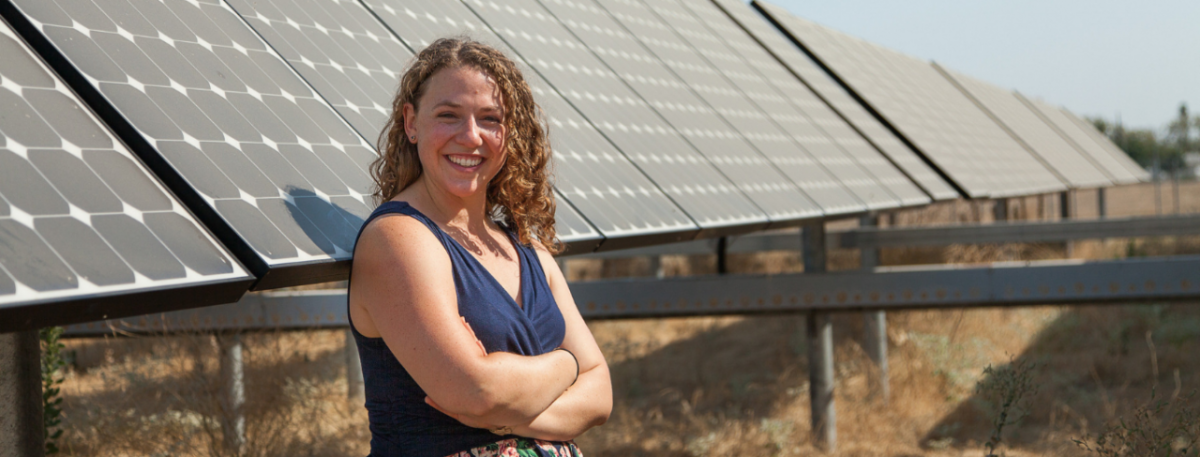What Presidential Hopefuls Can Learn From the Original “Climate Corps”
By: Scott Wood

Originally published by EDF+Business
The 2020 presidential candidates are starting to introduce an array of proposals to fight climate change. Included in the mix are multiple calls for creating a “Climate Corps” – a national service initiative designed to engage America’s youth to advance climate solutions.
I’m excited by the increased attention on climate change and about the debate on how best to involve the next generation in solving the climate crisis. As candidates and public officials look to develop their policy ideas, they might look to lessons learned from the original Climate Corps – Environmental Defense Fund’s fellowship program that empowers the next generation of sustainability leaders to help major companies, organizations and industries to take action on clean energy and climate.
Here are four considerations to help inform the effective design of any national climate-related service initiative.
1. More infrastructure is needed to meet the insatiable appetite for climate action
According to Fast Company, 75% of millennial workers would be “willing to accept a smaller salary to work for a company that’s environmentally responsible.” In fact, nearly 40% of millennials, who will represent one in three workers by 2020, have chosen a job because of its approach to corporate sustainability. They’re also three times more likely to work at or apply to a company because of its environmental or social impact.
EDF Climate Corps’ growth also echoes this demand. What started in 2008 with seven graduate students and seven companies has developed into a program that receives over 1,000 applications a year and has an acceptance rate of 10%, rivaling that of the country’s most competitive universities.
We’re proud of the diverse network we’ve created, and of where our nearly 1,000 alums have ended up, but it’s not enough.
Young people need more opportunities for climate action – not only as a temporary service initiative but also in their educations and careers. Any kind of national initiative should also help prepare and train young people to become climate leaders in their professional lives and to accelerate the shift to a thriving clean energy economy.
2. Sustainability and cost savings are complementary
We’ve seen firsthand that empowered young people can mobilize organizations to improve environmental performance, but sustainability also benefits the bottom line. Making the business case for sustainability is key to getting the necessary buy-in. Draw the line between how and why investing in energy projects can cut down on operational expenses and support an organization’s mission.
For example, EDF Climate Corps has worked with the New York City Housing Authority for the past nine years, placing 14 fellows to help with a suite of energy-related goals. Last year alone, two fellows created a strategic plan to reduce greenhouse gas emissions from fleet operations, which could reduce emissions 49% by 2038 and save roughly $100,000 per year.
A focus on sustainability can also unlock opportunities for process and logistics savings. According to the Harvard Business Review, Walmart “aimed to double fleet efficiency between 2005 and 2015 through better routing, truck loading, driver training, and advanced technologies. By the end of 2014, they had improved fuel efficiency approximately 87% compared to the 2005 baseline. In that year, these improvements resulted in 15,000 metric tons of CO2 emissions avoided and savings of nearly $11 million.”
At a national level, service projects could be prioritized based on potential to achieve cost savings and greenhouse gas reductions at the same time.
3. Collaboration encourages transparency and accountability
Leadership is more than just improving individual performance – it’s about helping others do the same by sharing best practices. One way to do this is by joining public, voluntary commitments to initiatives around greenhouse gas emissions, such as We Are Still In or RE100, which help companies set measurable targets and hold them publicly accountable. In particular, over the last few years, we’ve seen rapid growth in the number of companies, including Hershey and Best Buy, setting, or committing to set, Science-Based Targets.
We’ve witnessed time and again how collaboration and transparency can help companies make progress towards climate-related goals. This approach can be applied on a national level to help private and public sector organizations and cities do the same.
4. Collecting and leveraging rigorous data is key
Executives see data analytics as having the biggest potential impact on the bottom line, as well as on their organization’s environmental footprint and brand reputation. Analyzing operational data through a sustainability lens can inform smarter decision-making and identify engagement initiatives for reducing their carbon footprint.
Global healthcare company, Novartis, created an interactive dashboard for visualizing emissions stemming from both its upstream and downstream activities. Using this tool, Novartis can now track total carbon emissions, identify potential emission hotspots and take action by increasing supplier engagement initiatives to reduce its environmental impact.
By leveraging data, organizations have improved business and environmental outcomes and set specific, measurable climate goals.
Taking that one step further, aggregating data on a national level and in the public sector has the potential to supercharge environmental innovations that can be scaled across industries.
Follow Scott on Twitter
Follow EDF+Business on Twitter

